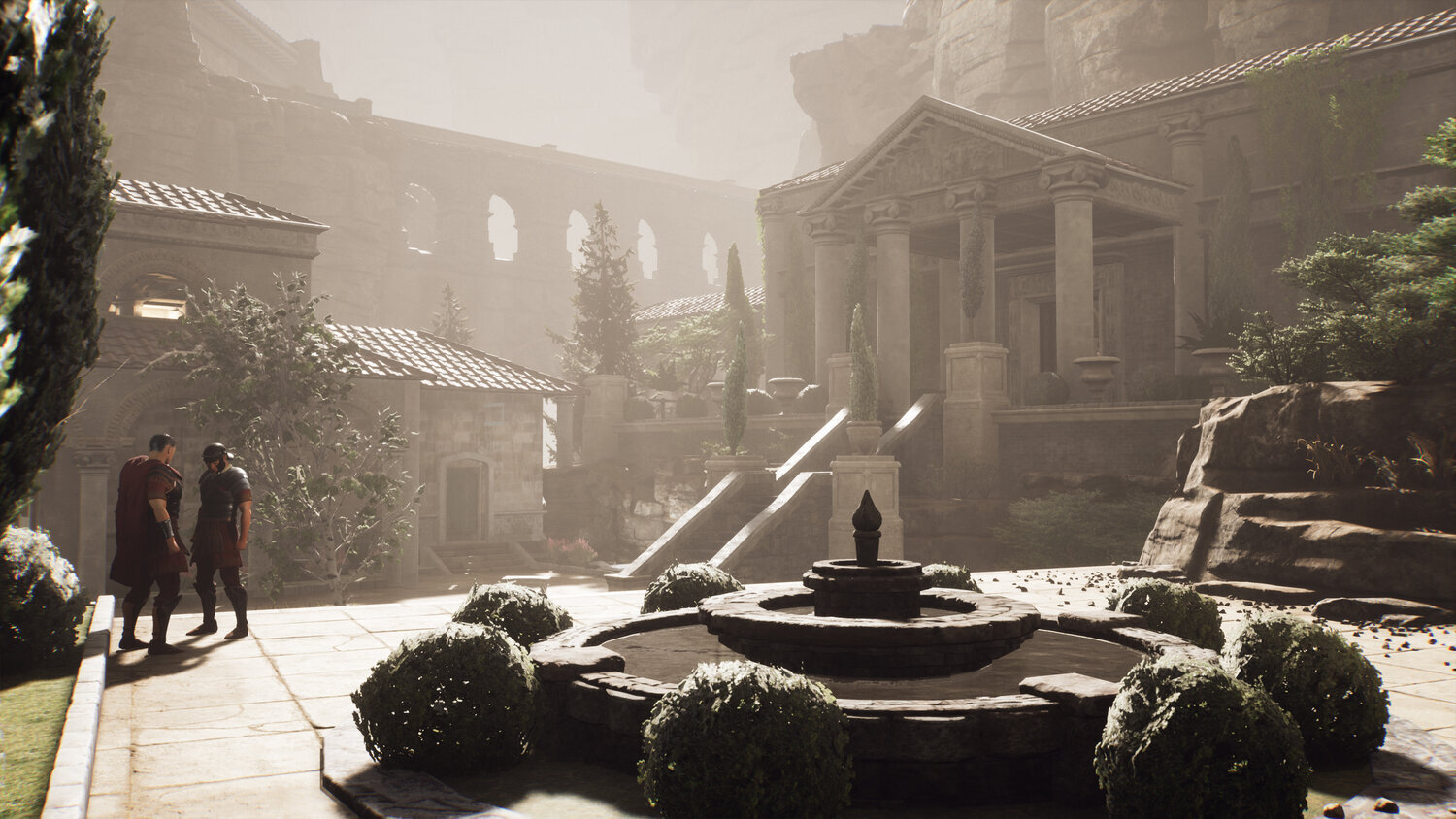The Forgotten City (Skyrim Mod) was so Good it's Becoming a Full Game
Bethesda Softworks often has the best support when it comes to post-launch modification. Such has been the case ever since Morrowind, adding hundreds of hours to an already time-encompassing game. Skyrim has also left open its proverbial bed chambers, accepting anything from full recreations of previous Elder Scrolls games to the absurdity of Thomas the Train as a dragon to all manners of nudity.
All jokes aside, there is still plenty of life left in Skyrim on the PC and one of the most popular mods left such an impact on me in 2015 that I’m still thinking about it. Luckily, the ideas experimented with are being transferred into a whole new release, titled simply as The Forgotten City and adopting a full Roman Empire backdrop.
Before diving into this new release, let’s take a step back and revisit my thoughts on the original mod from one of my first published articles on Giga Geek Magazine.
The Forgotten City Skyrim mod added a whole new area for players to explore, packaged with its own narrative and a plethora of top-notch voice acting. A quick download and a bit of a walk leads hopeful dungeon divers to a gorgeous scene of a cave mouth just behind the veil of a waterfall. What lies beyond the entrance are mysteries beyond typical logic.
Charred corpses lay strewn about broken Dwarven architecture, husks of their former grandiose. After delving deeper to the heart of the underground city, a desperate girl looms over a massive well, her face in obvious despair. She approaches Dovakhiin, asking him to help find her brother, who has been exploring the ruins. Accepting the quest feels simple enough, but after the exchange is over, one quickly realizes that in order to find him, a leap of faith must be taken.
Falling through that shaft felt like a mistake, but luckily a deep pool of water lies at the bottom. Once again the player gets to explore a destroyed city, eventually coming across a lake house. Inside is a broken soul gem, and a note that tells of the tragedy and pleads for help. Magic then swirls about the only doorway, giving the player no choice. Stepping in flings the hero into the past, before the tragedy occurred.
Stepping out of the lake house is a powerful moment. The sheer beauty of the place, after witnessing what will befall it, immediately plants seeds of wanting to save the city. There are several little moments like this in The Forgotten City that demonstrates the modder’s keen understanding of using the environment to tell a story. Frankly, this first moment is brilliant. Invested in the story already, players are introduced to a host of characters as a simple farmer leads the Dragonborn to the Jarl, or Mayor of the city.
Many people are introduced, giving hints to their motives and backgrounds with expertly crafted dialogue. Even the characters’ tone is used to add more to each exchange, something that vanilla Skyrim often failed to achieve. In fact, much of the appeal of The Forgotten City is uncovering each character’s unique tale.
After a strange meeting with the Jarl, in which the player presents him with a letter written from his future self, the Dwarven Law is introduced. After this conversation, the Jarl tasks Dovakhiin to find out who will trigger the calamity that ends their utopia and to stop them by any means necessary. He looks out at his city from his perch at the top of the Citadel, desperately wanting things to stay how they are.
The Dwarven Law in its setup and execution is worth further analysis. It’s talked about with loathing as it keeps all citizens in check, but no one challenges it in fear of damning their entire community. In fact, all characters will back down from intimidation or blatantly insult it. The Law also instills a fear that weighs down on players, adding an air of unease to the entire game, while forcing players to break their “pillage all” habits.
As the story progresses, the Dwarven Law reveals itself as quite the moral dilemma. Many characters call the Jarl’s leadership into question, leaving several to ask just what is against the Law? Others sought refuge from the brutal world outside, seeing the Law as a saving grace. This idea of morality is paralleled with the characters.
One such example is that of Vernon, a produce vendor in the city square. He seems to enjoy his work and is happily ready to sell his wares, but his mood drastically changes when a note comes from under the door. The note calls Vernon an abomination and threatens him, all in blood red ink. Players can take this note straight to the Jarl and sentence him to death, yet a more interesting option lies in showing the letter to Vernon. Vernon, seeing this treatment before, reveals that he is gay. Players are then left to find who would write such a letter and try to resolve the issue.
This focus on characters and narrative permeates the entire mod. There is little combat to be had; only a few situations lead to a sword being drawn. Where the mod shines is how its narrative proposes an interesting “Who will do it?” detective scenario, while also elaborating on the mysterious Dwarves of Tamriel. Truly, the story is worth exploring for anyone entranced by the larger lore possibilities of Tamriel, especially when factoring in the multiple ways to finish the quest and return to the present. Learning a character’s motives through looking at what they have in their home, or noticing their subtle shift in tone rewards players who pay attention to detail.
The Forgotten City also sports a polish that many mods fail to achieve on their first few versions. Other players have complained about certain events not triggering correctly, but I found no such problems during my six-hour playthrough. I did spend a lot of time walking back and forth in the area when trying to solve a puzzle, wracking my brain to think outside the box. When I finally succeeded, I felt that I was rewarded for my cleverness and considered my fear of destroying the city. I would reload a save every time I accidentally stole a carrot or hit the wrong dialogue choice. The cataclysm can be reversed by revisiting the lake house and going through the portal again, creating a Groundhog Day-esque time loop.
Dr. Who would be proud of Pearce’s use of time travel and the theories associated with it.
The Forgotten City’s final moments are epic as the pieces of the puzzle fall into place. Things are clarified in interesting ways. To get the best ending, one has to use what’s been learned in order to do something absurdly brilliant. Finishing the game, for me, was a bittersweet moment. Bringing closure to the characters of the city brought true joy to my heart. I’ll even go as far as saying I teared up a bit. Yet, I was left feeling hungry for more adventure, wanting to discover other things lost to the destructive nature of time.
This adventure is an excellent example of game modification being used to its true potential. The atmosphere adds layers of depth to the expertly crafted narrative, while talented actors and actresses give an applaud-worthy performance. Like a giant puzzle, solving the mysteries of this long-forgotten city is rewarding both on a mechanical level and on an emotional one.
The Forgotten City is the candle I will hold up to all other mods that follow.
Thus ends that original review.
I’ve always enjoyed doing deeper dives into game mods and it’s something I hope to continue on Forever Classic Games. Looking towards the future, Modern Storyteller seems be expanding this concept into something truly special. According to their Steam page, The Forgotten City is targeting Winter 2020 for release and there seems to be an Xbox One version on the way as well. I hope to explore The Forgotten City further when it drops later this year.
This post was originally published on October 22, 2015 on Giga Geek Magazine. Publications of past articles are done with permission of the site’s owner and may have been modified for relevancy or new information.





Last year thousands of layoffs beat down the spirit of the games industry. Despite this tumultuous state, some of the best games we’ve seen in most genres released and that’s worth celebrating. We only hope that 2023 will hopefully be a turning point for everyone involved in the games industry.